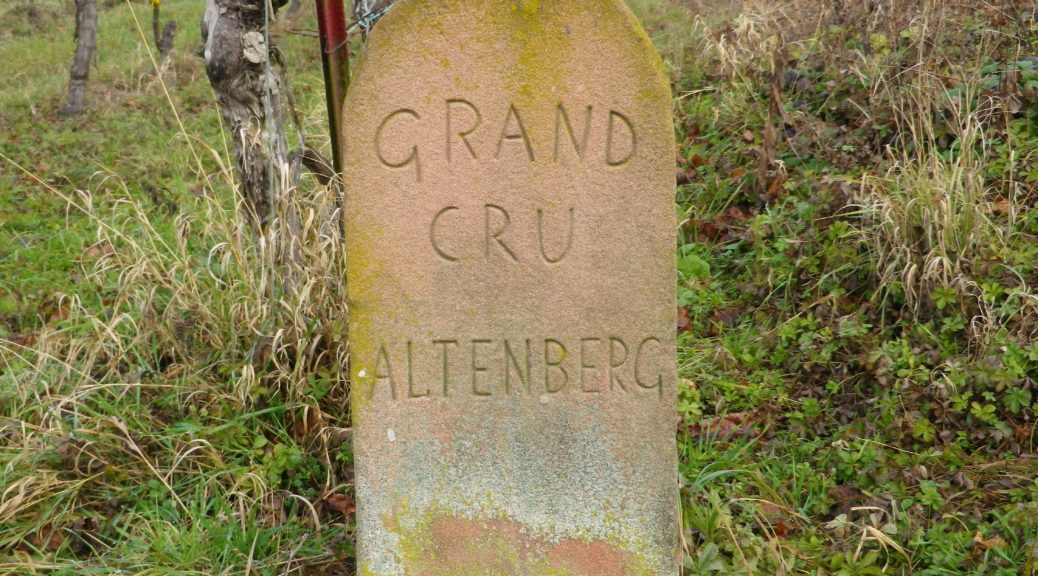What I Learned
The Alsatian wine region is famous throughout France, and the world. It is a great place to try excellent French wines, at very reasonable prices. Politically, Alsace is divided into two districts, or departments. The Haut Rhin is the southern-most. Above it is the Bash Rhin, stretching north to the border with Germany. The Rhine river marks the eastern border of both, and the Vosges mountains lie on the western side of each.
In the Bas Rhin as well as the Haut Rhin, a parcel of vines known for its exceptional terroir is identified as a “Grand Cru”. Because of the more favorable growing conditions found in these parcels, Grand Cru wines in theory tend to produce better examples of any given varietal wine. The following listing is of Grands Crus in the Bas Rhin Department from north to south: The Steinklotz of Marlenheim, Dahlenheim’s Engelberg, the Altenbergs of Wolxheim and Bergbieten, and Molsheim’s Bruderthal. These are the northern-most Grands Crus in Alsace. If the wine comes from a Grand Cru, the labels indicate which one.
Six main white varietals grow throughout Alsace: Riesling, Sylvaner, Gewuerztraminer, Muscat, Pinot Blanc, Pinot Gris. Pinot Noir is the only red varietal. In Alsace, most wines are sold as varietals, and unusually for France, are labelled as such. These seven varietals are the only varietals, which if they meet other standards, may be labelled as appellation wines.
A typical Alsatian label will state not only the varietal and the year, Additionally, the appellation designation, be it a Grand Cru, or the most common “Appellation Alsace Controlee”, will be identified as well as. Because of this labeling protocol a wine buyer new to Alsatian wines can easily begin to understand the type and general quality of wine on offer.
What I Tasted
2014 Gewuerztraminer, Appellation Alsace Grand Cru Controlee (AOC) Alsace, Robert Kligenfus, Molsheim: A dry white wine with medium gold color; sweet floral nose, roses and gardenia; flavors of rose, honeysuckle, vanilla, lychee; mild to no acidity.
2014 Riesling, Grand Cru Engelberg AOC, Cave du Roi Dagobert: A dry white wine with light gold color; a floral and fruity nose, with white fruit, grapefruit and floral flavors; medium acidity.
2013 Gewuerztraminer, Grand Cru Altenberg de Wolxheim AOC, Cave du Roi Dagobert: A dry white wine with medium gold color; aromas of lychee and spice, with lychee, tropical fruits, floral and spice flavors; medium-low acidity.
2009 Riesling, Altenberg de Wolxheim AOC, Cave du Roi Dagobert: A dry white wine with medium plus gold color; nose of turpentine and mineral; peach, vanilla, spicy and smoky flavors; medium plus acidity.
